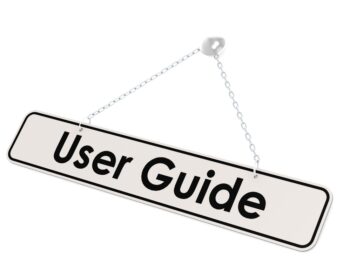Boo boos abound… claim handling mistakes that should never have happened.
A recent workers compensation claim file audit turned up a leading candidate for the worst claim handling ever. A third party administrator (TPA) was handling claims for a statewide government self-insurance pool. And yes, all of the following mistakes were on one file! The mistakes in handling will be noted in bold italics.
1- Coverage
The TPA adjuster upon receiving the claim went into their computer link to the client's database to verify coverage. The coverage had expired on June 30, 2005. The claim was reported on July 12, 2005 with a date of loss of July 5, 2005. The adjuster wrote in the files notes “Coverage not updated yet in computer, will confirm coverage before making any payments.” That would have been fine if the adjuster had done so, but the TPA switched adjusters and the coverage question was forgotten. [Mistakes – (1) Proceeding to handle the claim before coverage was verified, (2) the second adjuster not reading the first adjuster's file notes]. (WCxKit)
The lack of coverage wasn't address again until the pool's executive director contacted the adjuster over a year later. By then over $65,000 had been paid on medical and indemnity by the TPA from the pool's trust fund. There was no coverage but the pool was in an estoppel situation, so a decision was made to continue to cover the claim.
2- Contacts
The published Best Practices for the TPA included making 24-hour contact with the employer, the employee and the medical provider. The TPA had overloaded its workers comp adjusters with over 200 files each (the government pool's contract did not contain any provision for the maximum number of claims to be assigned to an adjuster). [Self Insured Mistake – Not having a stipulation in the contract on how many files can be assigned to one adjuster]. The second adjuster on the file never even saw the claim during the first three months is was assigned to the adjuster. [Mistakes – (1) Not reviewing the file when it was assigned, (2) Timely contacts with the involved parties were not made].
3- Investigation
Since the second adjuster never contacted the insured or the claimant or the medical provider, there was no investigation of the claim. The Employer's First Report of injury reflected, “the employee (a painter) hurt her lower back when she tried to move a five-gallon bucket of paint.” [Mistake – No investigation of the claim].
4- Medical Handling
The medical reports and bills started coming in. Entries into the file notes all read “Received medical bill” or “Paid medical bill” with the name of the medical provider and the bill amount. One medical report summarized in the file notes stated, “employee continues to work with her low back pain and wrist pain.” Three months into the claim a medical report states “will need to do bilateral CTS (carpal tunnel syndrome) surgery.” [Mistake – Not comparing the medical reports with the reported injury on the claim]. The employee was an obese woman with diabetes – two factors that can bring on CTS without an injury. Even though the claim was reported as a back injury, at no time did the adjuster question the carpal tunnel syndrome treatment. [Mistakes – (1) failure to separate a covered injury from other medical conditions of the employee, (2) lack of medical knowledge that CTS is not always injury related, (3) failure to get a medical termination based on whether the CTS was work related or not – if it was it should have been handled as a separate claim].
5- Indemnity Handling
The first contact with the employee occurs over four months into the claim when the employee calls the adjuster inquiring about when she would be paid for her TTD, as she was off work due to the right wrist CTS surgery (the left wrist would be done a couple months later). The adjuster does not follow up on the TTD question and gets another phone call from the employee. The first contact with the employer occurs almost five months into the claim when the adjuster calls the employer for a wage statement. [Mistakes – (1) no on-going contacts with the employee and the employer, (2) not obtaining the wage statement from the employer when it was first noted the employee was going to need CTS surgery].
The adjuster puts the temporary total disability (TTD) checks on autopilot and forgets about them. After about six months, the employee returns to work. As the adjuster had not been in contact with the employee or the employer, the TTD checks just kept on going out. The adjuster does not know the employee is back to work until the medical reports comes in stating the employee was at maximum medical improvement on her wrists and had been given a 15% impairment rating for both wrist combined. The employee would receive an extra eight weeks of TTD after she was back at work for the employer. The adjuster states in the claim file notes the overpayment of TTD will be taken out of the permanent partial disability (PPD) settlement (it never was recovered). [Mistakes – (1) no on-going contact with the employer or the employee, (2) not making any effort to get the employee back to work earlier or to return to work on light duty, (3) putting TTD checks on long-term automatic issue]. (WCxKit)
6- Remember the low back pain?
The employee had only been back to work for two months when the adjuster contacted her in regards to the overpayment of TTD and settlement of the PPD claim. The employee advised the adjuster that her back still hurts her and she needs to go to the doctor about her back. The doctor orders an MRI of the low back. The employee has a herniated disc at L4-L5 and a partially herniated disc at L5-S1. The doctor schedules surgery for the employee. [Mistake – Not having inquired about the lack of medical treatment on the low back for almost a year].
The adjuster (who is finally paying attention to this claim) refuses to approve the surgery until an independent medical evaluation (IME) can be completed. The IME confirms the need for the surgery and the surgery is performed. After the surgery, the employee is off work for another seven months before the doctor places her at maximum medical improvement with a 25% rating. [Mistake – not making any effort to get the employee back to work earlier or to return to work on light duty].
7- Negotiations
The adjuster contacts the claimant and offers to settle both of her PPD ratings based on her being 40% disabled. The employee counters that she should be considered 100% disabled as she is not able to go back to her job as a painter. The adjuster declined to consider the claimant as having permanent total disability (PTD). A week later the adjuster receives a letter of representation from the new attorney for the employee. The adjuster declines to agree with the attorney that the employee is PTD. The employee's attorney files for a hearing before an administrative law judge (ALJ). The ALJ reviews all the medical records and agrees with the defense attorney hired by the adjuster. The employee's attorney appeals and the Workers Comp Board (WCB) agrees with the defense attorney. The adjuster pays the 40% PPD rating.
8- Worsening of Condition
A year later the employee's attorney contacts the claims office, but the second adjuster is no longer with the TPA. A third adjuster on the claim learns that the attorney is filing with the WCB a request for the WCB to consider a “worsening of condition.”
9- Index Search
The new (third) adjuster looks over the file and realizes an ISO Index has never been filed on the claim. The index is filed and it comes back that the employee had a prior back injury claim in 1997 (the employee was represented by the same attorney for both the 1999 claim and the 2005 claim). A check with the prior insurance company turns up the employee was already classified as 10% PPD (for a non-operated herniated disc) before the 2005 accident. The prior medical is obtained and the employee's 1999 accident was for an L4-L5 herniated disc – the same injury the claimant had surgery for in 2007. [Mistake – Failure to index the claimant resulted in the TPA/pool paying for a claim that should have never been paid].
10- Exacerbation vs. New Claim
At this point it was obvious that the 2005 injury was not a new claim, but the exacerbation of an old claim. If the index had been done in 2005, the claim could have been referred back to the prior insurance carrier. The defense attorney files a plea with the ALJ to transfer the claim back to the original insurance company (remember this is after the TPA has already paid the employee a 40% award [15% wrist and 25% back] on top of the 10% award the employee had received for the 1999 claim).
The ALJ responds the TPA had already accepted the 2005 injury as a new claim and would not change it now. The appeal to WCB went nowhere, so the current insurer was stuck paying for the claim even though it was an exacerbation of a preexisting injury.
11- Back to the Medical
The employee's fusion had failed. The treating doctor was recommending another surgery. The third adjuster was too inexperienced to be handling this type of claim. [Self Insured Mistake – Not having a stipulation in the contract requiring experienced adjusters to handle the claims -especially the high dollar ones]. She asked her supervisor what to do. The supervisor advised to get another IME. The IME stated the fusion had partially failed, but absolutely would not recommend another surgery.
12- Sympathy
The attorney gave the third adjuster a sad tale of how much pain the employee was in, that employee's marriage was falling apart due to her pain and she was desperate to have the surgery. The attorney played on the adjuster's sympathy until the adjuster agreed for the employee to have the surgery. [Mistake – Allowing emotions instead of medical facts to make the determination on how to proceed on a claim – she should have had denied the additional surgery and forced the employee's attorney to have the ALJ or even the WCB make the determination].
13- PTD Granted
Following the second surgery – did the employee and her attorney appreciate the adjuster agreeing to surgery even after the IME said it was not needed? No, the attorney filed a petition for PTD. The treating physician had given the employee a total 75% PPD rating based on the bilateral CTS surgeries and the two back surgeries. The defense attorney arranged another IME of the employee and got a similar rating of 65% total. The ALJ looked at the total medical history and the employee's 65% or 75% permanent partial disability rating following her two wrist surgeries and her two back surgeries. The ALJ gave the employee a PTD finding. The defense attorney appealed to the WCB. The WCB agreed with the ALJ and the third adjuster paid the employee another 50% (on top of the 10% award from the 1999 claim and the 40% already paid on the 2005 claim). (WCxKit)
Summary
The failure to do the simple things in the claim file handling resulted in the self-insured pool paying out over a half million dollars in medical, indemnity and legal expense. Verification of coverage would have stopped this claim before any dollars were paid. A proper investigation at the start of the claim, including an index of the employee, would have shown the low back claim was an exacerbation of a prior injury and would have eliminate that portion of the claim. The review of the medical reports would have resulting in a denial of the CTS or at least had it treated as a separate claim. The non-compliance with Best Practices changed what should have been zero dollars paid into a PTD claim. (The E&O claims brought by the self-insured pool against the TPA have not yet been resolved).
Author Rebecca Shafer, J.D., President, Amaxx Risks Solutions, Inc. is a writer, speaker and publisher. As an industry leader in workers' compensation cost containment, she has worked successfully for 20 years with many industries to reduce workers’ compensation costs, including airlines, healthcare, printing/publishing, pharmaceuticals, retail, hospitality, transportation and manufacturing. Info@ReduceYourWorkersComp.com or 860-553-6604.
WC Roundtable LinkedIn: http://www.linkedin.com/groups?homeNewMember=&gid=1922050/
WC Roundtable LinkedIn: http://www.linkedin.com/groups?homeNewMember=&gid=1922050/
Work Comp Calculator: http://www.LowerWC.com/calculator.php
RTW Calculator: http://www.LowerWC.com/transitional-duty-cost-calculator.php
Do not use this information without independent verification. All state laws vary. You should consult with your insurance broker or agent about workers' comp issues.
RTW Calculator: http://www.LowerWC.com/transitional-duty-cost-calculator.php
Do not use this information without independent verification. All state laws vary. You should consult with your insurance broker or agent about workers' comp issues.
©2010 Amaxx Risk Solutions, Inc. All rights reserved under International Copyright Law. If you would like permission to reprint this material, contact Info@WorkersCompKit.com
















